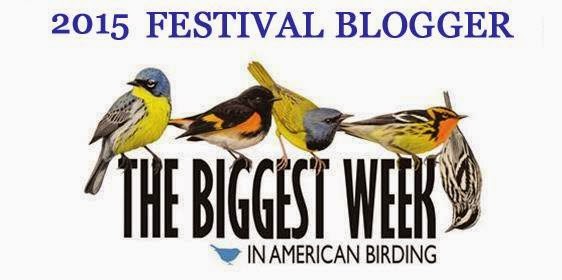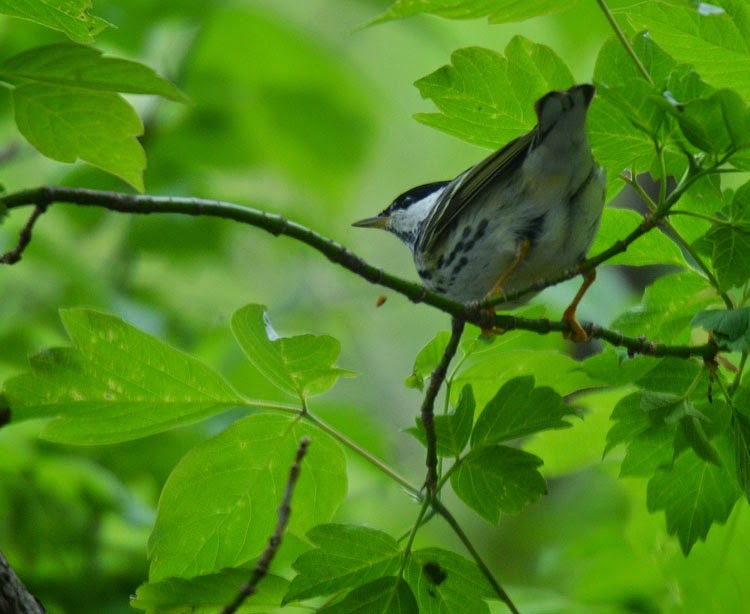Tuesday afternoon before the rains settled in I headed over to the Little Miami River to listen to the birds...and see what I could see. The deep greens of late spring surrounded me, and the peace that comes from heavy woods slowly seeped into my brain and heart. I had been away from the river for too long, and it felt good to be back on its banks. Within minutes of stepping on the trail, I could hear Northern Parulas, Red-eyed Vireos, Blue Gray Gnatcatchers, a Pileated Woodpecker, a Prothonotary Warbler or two, and of course, chickadees, tufted titmice, robins and cardinals, but the birds that won out in their exuberance to announce the green season were the Acadian Flycatchers...
 |
| An Acadian Flycatcher perches in a sea of green ever watchful for insects to nab from the air. |
 |
| ...all the flycatchers look so much alike. The only way I can identify this bird is by its explosive and exuberant call. Its mnemonic likeness is "Peet-sah," and every few feet along the trail I would hear its loud exclamation. Click here for an example of its call. |
The Acadian Flycatcher as a riparian corridor indicator species
A riparian corridor is a mature woodland growing along a river or stream, and an indicator species "indicates" whether an environment is healthy. So if the Acadian Flycatcher is living along the Little Miami river, we know the corridor is doing well and the river is free of pollution. Because the Little Miami River has been conserved over the years, it offers an oasis of continuous, mature woodland. Its forested corridor of large trees offers respite and food for the woodland warblers migrating north from their wintering grounds in South America. Some of the migrants use the corridor to wing their way north, eating the flying insects and catepillars in the trees to fuel their journey, while other species make the corridor their summer home and nesting ground. The Acadian Flycatcher is one of the spring migrants that sticks around. Acadian Flycatchers require large stretches of dense-canopied and wet deciduous forests like those found in the floodplains and river lowlands of the Little Miami River corridor. Since the Acadian Flycatcher is one of the best indicator species of riparian quality, I'm always happy to hear its loud, explosive call when I'm on the trail!
A riparian corridor is a mature woodland growing along a river or stream, and an indicator species "indicates" whether an environment is healthy. So if the Acadian Flycatcher is living along the Little Miami river, we know the corridor is doing well and the river is free of pollution. Because the Little Miami River has been conserved over the years, it offers an oasis of continuous, mature woodland. Its forested corridor of large trees offers respite and food for the woodland warblers migrating north from their wintering grounds in South America. Some of the migrants use the corridor to wing their way north, eating the flying insects and catepillars in the trees to fuel their journey, while other species make the corridor their summer home and nesting ground. The Acadian Flycatcher is one of the spring migrants that sticks around. Acadian Flycatchers require large stretches of dense-canopied and wet deciduous forests like those found in the floodplains and river lowlands of the Little Miami River corridor. Since the Acadian Flycatcher is one of the best indicator species of riparian quality, I'm always happy to hear its loud, explosive call when I'm on the trail!
For more information on indicator species, click here.
For more information on riparian corridor birds of Ohio rivers, click here.





















